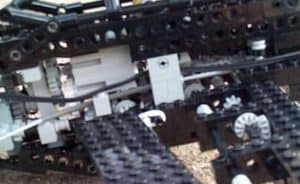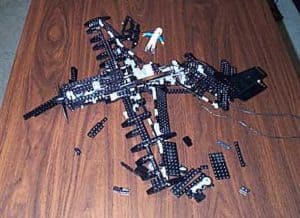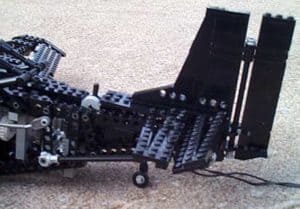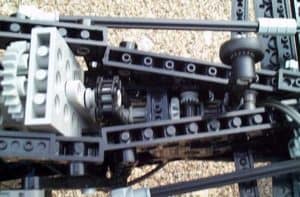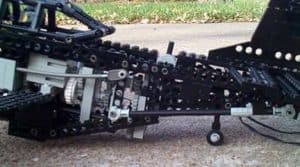P-51 Mustang
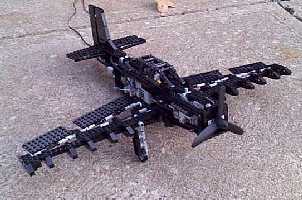
Overall:
* Length: 19 inches
* Wingspan: 22 inches
* Height: 7 inches without landing gear deployed
* Weight: About 2 pounds
Motor #1 Controls:
* The main propellor
* Two fiberoptic banks that run to the engine exhaust ports
* Extra fiberoptics that provide cockpit lighting
Motor #2 Controls:
* Landing Gear
* Landing Flaps
Manual Controls:
* Opening cockpit
* Rudder pedals in cockpit that control tail rudder
* Control stick in cockpit that controls ailerons on main wings and the elevators on the tail.
This is the most complex Technic model I have created thus far. It took me about two months to finish work on it, although I didn’t work on it full-time. I recently got my hands on a second 8480 space shuttle, as well as an 8880 Supercar, so I expect some more interesting technic sets will soon be coming. I don’t see me doing anything else with the P-51, though. I would love to build a P-38 Lightning, but I only have one large Technic propellor. If anyone has an extra propellor from the 8855 set, please send it to me!
Mechanical Features
The control stick in the cockpit controls the ailerons on the main wings and the elevators on the tail. left and right motions on the stick move the ailerons up and down. Pushing the stick back and forth drives a flex cable and pivot that leads to the tail of the plane. This linkage hooks to the underside of the elevators. As the stick is pushed forward and back, the elevators move up and down.
Electrical Systems
As I mentioned earlier, there are two motors in this P-51. One is mounted in the nose, and controls the propellor, cockpit lights, and fiberoptics There are two banks of fiberoptics in the nose of the plane. The motor outputs through both banks of fiberoptics and gears down to spin the propellor. The fiberoptics go to each of the 12 exhaust ports. The final 4 lights go to the four cockpit lights seen in the the interior of the cockpit. The switch seen protruding from the top of the nose turns this motor on and off. The power wire for this motor is routed through the assembly and exits at tail of the plane. This model is not large enough to have the batteries enclosed onboard.
The second motor is mounted behind the pilot’s seat, and controls the landing gear and landing flaps. The motor behind the pilot’s seat has some more interesting mechanics involved in it. It drives a two speed transmission that can be switched between controlling the flaps and controlling the landing gear. When the sliding cog is pushed forward, it activates the flaps, lowering them for landing. Pushing the cog to the right activates the landing gear, both front and rear. This motor also has a switch that controls it, and has a separate power cable that leads out of the tail of the plane.





